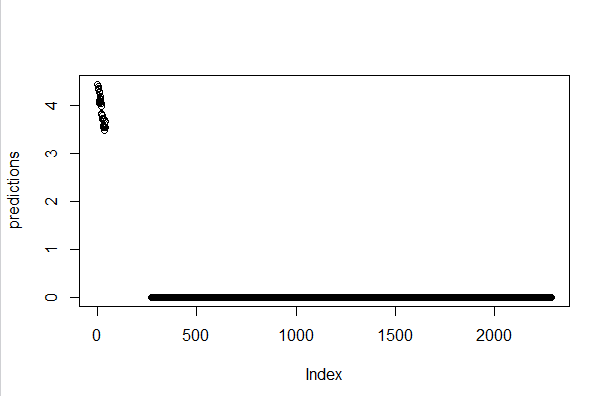dput(MORTGAGE30US)
3.98, 3.91, 3.94, 3.93, 3.84, 3.89, 3.9, 3.91, 3.86, 3.85,
3.76, 3.82, 3.79, 3.76, 3.87, 3.98, 3.97, 3.95, 3.93, 3.95, 3.97,
3.96, 4.01, 3.97, 3.92, 3.81, 3.79, 3.72, 3.65, 3.65, 3.62, 3.64,
3.68, 3.73, 3.71, 3.71, 3.59, 3.58, 3.59, 3.66, 3.61, 3.57, 3.58,
3.64, 3.66, 3.6, 3.54, 3.56, 3.48, 3.41, 3.42, 3.45, 3.48, 3.43,
3.45, 3.43, 3.43, 3.46, 3.44, 3.5, 3.48, 3.42, 3.42, 3.47, 3.52,
3.47, 3.54, 3.57, 3.94, 4.03, 4.08, 4.13, 4.16, 4.3, 4.32, 4.2,
4.12, 4.09, 4.19, 4.19, 4.17, 4.15, 4.16, 4.1, 4.21, 4.3, 4.23,
4.14, 4.1, 4.08, 3.97, 4.03, 4.02, 4.05, 4.02, 3.95, 3.94, 3.89,
3.91, 3.9, 3.88, 3.96, 4.03, 3.96, 3.92, 3.93, 3.9, 3.89, 3.86,
3.82, 3.78, 3.78, 3.83, 3.83, 3.85, 3.91, 3.88, 3.94, 3.94, 3.9,
3.95, 3.92, 3.9, 3.94, 3.93, 3.94, 3.99, 3.95, 3.99, 4.04, 4.15,
4.22, 4.32, 4.38, 4.4, 4.43, 4.46, 4.44, 4.45, 4.44, 4.4, 4.42,
4.47, 4.58, 4.55, 4.55, 4.61, 4.66, 4.56, 4.54, 4.62, 4.57, 4.55,
4.52, 4.53, 4.52, 4.54, 4.6, 4.59, 4.53, 4.51, 4.52, 4.54, 4.6,
4.65, 4.72, 4.71, 4.9, 4.85, 4.86, 4.83, 4.94, 4.94, 4.81, 4.81,
4.75, 4.63, 4.62, 4.55, 4.51, 4.45, 4.45, 4.45, 4.46, 4.41, 4.37,
4.35, 4.35, 4.41, 4.31, 4.28, 4.06, 4.08, 4.12, 4.17, 4.2, 4.14,
4.1, 4.07, 4.06, 3.99, 3.82, 3.82, 3.84, 3.73, 3.75, 3.75, 3.81,
3.75, 3.75, 3.6, 3.6, 3.55, 3.58, 3.49, 3.56, 3.73, 3.64, 3.65,
3.57, 3.69, 3.75, 3.78, 3.69, 3.75, 3.66, 3.68, 3.68, 3.73, 3.73,
3.74, 3.72, 3.64, 3.65, 3.6, 3.51, 3.45, 3.47, 3.49, 3.45, 3.29,
3.36, 3.65, 3.5, 3.33, 3.33, 3.31, 3.33, 3.23, 3.26, 3.28, 3.24,
3.15, 3.18, 3.21, 3.13, 3.13, 3.07, 3.03, 2.98, 3.01, 2.99
